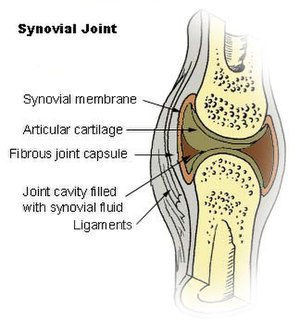Depression Can Make Knee Pain Worse – Study
A recent study in The Journal of Bone and Joint Surgery showed that people who had mild to moderate knee osteoarthritis and were depressed rated their pain as severe, the level which others in the study who had x-ray documented advanced osteoarthritis reported.
I’ve always believed that there is a “mind-body” connection, and this is yet another study that supports this. The thoughts that you allow to enter your mind can have a definite effect on your physiology, whether it be blood pressure, heart rate, respiration rate, digestion, strength, immune response, or pain. Check out this cancer treatment center’s use of visual and music therapy to help with treatment.
Jon T. Giles, MD, an assistant professor of medicine at Columbia University and rheumatologist at New York Presbyterian Hospital in New York City, says this study adds further weight to the existing medical literature highlighting the effect of psychosocial issues on pain responses.
“Painful sensations are relayed through the brain in a very complex way, and can be modulated up or down,” he says. With stress, poor sleep, anxiety and depression, which are known to influence pain levels, “stimuli feel more painful than they would in someone without the adverse psychosocial factors. This probably explains in part why the largest effect of depression in the study was seen in those without much OA to see on X-rays.”
The study recommends that patients fitting this profile get psychiatric evaluation and treatment, including anti-depressant drugs, in order to help alleviate their pain.
The study does not outright say that only “clinical” depression can make pain worse. If you have pain, persistent negative thoughts are more likely to make it appear worse than it actually is. Remember, the perception of pain is a complex neurological pathway that is not entirely understood.
I can sympathize with those experiencing chronic pain– it can be a terrible cycle, where the pain itself can push the patient to negative thoughts and depression, embedding it further and further into the body’s central nervous system. Speaking as a human being, and not just a health care provider, I can offer the following suggestions to break the cycle. And I’m sure it’s not all new, but worth repeating here:
1. Don’t hang around negative people. Their negative energy will bring you down. Instead, hang around those with “positive buoyancy,” the ones who can lift you up emotionally. Most small children fit in this group.
2. Similar to #1, avoid negative stimuli in your environment– crime shows, news, reality TV, newspaper headliners, internet news, etc.
3. Find something to keep your mind occupied; something that requires active brain usage (not passive, like watching TV). Social activities that involve interacting and working with other people is a good choice; especially if it is for a good cause. Arts and crafts is another good choice.
4. Get a pet. There’s nothing like a dog who exhibits unconditional, total loyalty to you.
5. Eat only those foods that nourish the body. The nutrient dense foods that occur naturally; i.e. plants and animals are the best for a body experiencing pain: fruits, green leaf plants, sardines, lean meat, nuts. Definitely avoid cigarette smoke, alcohol, corn syrup, sugar, and food preservatives.
6. Get out in the sun. Take of your shirt, expose your trunk to the sun several times throughout the day.
7. Stay active, as much as your pain will allow. Tai chi and yoga are good if your body can’t handle the forces of running , jumping, and lifting weights. Walking briskly is good, too.
8. Get fresh air. Drive to your nearest nature preserve, far enough away from the city and suburbs and get some negative ions (the only good, negative thing if you’re in pain!) and clean oxygen in your lungs.











